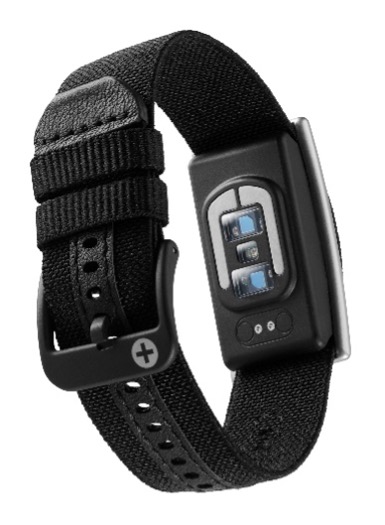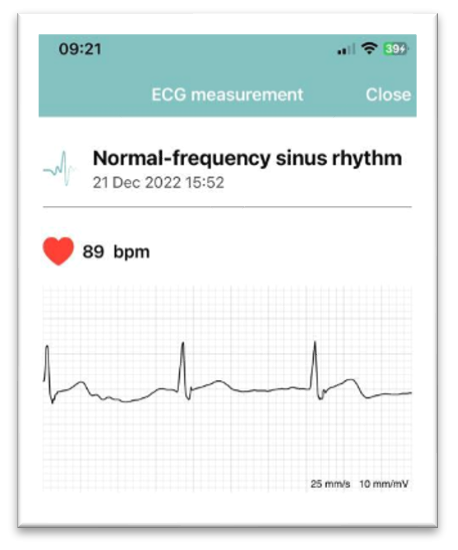The Corsano CardioWatch 287-2 Bracelet implements a 1-lead electrocardiographic (ECG) system featuring electromagnetic interference (EMI) filtering, internal lead biasing, right-leg drive and lead-off detection.
ECG system
The system is composed of 3 electrodes. Two electrodes are located on the case back of the Bracelet, contacting the wrist skin through dry contacts. They are the positive ECG electrode and the right-leg electrode. The right-leg electrode enables to increase the rejection of noise and common-mode signals. The third electrode is the metal frame on the top of the Bracelet. This is the negative ECG electrode.
The patient must wear the Bracelet on one wrist and touch the top frame with the other hand to enable the ECG system to measure the electrical heart signal flowing from one arm to the other.
ECG electrodes and signal
The electrodes are internally connected to the low noise and high-performance ECG circuit comprising the latest generation of analog front-end (AFE) integrated circuits, provided by world leading manufacturer. The electronics layout implements noise reduction and immunity techniques to achieve the performances required by medical standards. The ECG circuit measures the heart electrical signal and rejects noise and common-mode signals, thanks to analogue and digital filters and right-leg drive. Lead-off detection enables to verify the proper contacts of electrodes and improves the usability of the Bracelet.
ECG validation
The Corsano CardioWatch 287-2 ECG system was validated according to the harmonized standard EN-IEC 60601-2-47:2015 for performance and safety of ambulatory ECG systems.
The tests were performed by the accredited laboratory Kiwa Dare in Woerden, NL.
ECG specifications
| Sensing method | 1-lead ECG with right-leg noise rejection |
| Electrodes | Contact Dry Electrodes |
| Sampling frequency | 256 Hz |
| Signal range | ±1300 mV |
| Frequency range | 0.05 – 55 Hz |
| Resolution | 15.3 ENOB (effective Number of Bits) |
| Common-mode rejection ratio | 110 dB (at 50 Hz and 60 Hz) |
| Input impedance | 1 GΩ |
| Performance | EN-IEC 60601-2-47 |


